
Deutsch-Chinesische Enzyklopädie, 德汉百科
 摩纳哥
摩纳哥
 *地中海
*地中海
 埃及
埃及
 阿尔巴尼亚
阿尔巴尼亚
 阿尔及利亚
阿尔及利亚
 琥珀之路
琥珀之路
 波斯尼亚和黑塞哥维那
波斯尼亚和黑塞哥维那
 法国
法国
 直布罗陀
直布罗陀
 希腊
希腊
 以色列
以色列
 意大利
意大利
 克罗地亚
克罗地亚
 黎巴嫩
黎巴嫩
 利比亚
利比亚
 马耳他
马耳他
 马耳他
马耳他
 摩纳哥
摩纳哥
 黑山
黑山
 巴勒斯坦
巴勒斯坦

 往日岁月
往日岁月
 斯洛文尼亚
斯洛文尼亚
 西班牙
西班牙
 叙利亚
叙利亚
 突尼斯
突尼斯
 土耳其
土耳其
 塞浦路斯
塞浦路斯
 *地中海
*地中海
 埃及
埃及
 阿尔巴尼亚
阿尔巴尼亚
 阿尔及利亚
阿尔及利亚
 琥珀之路
琥珀之路
 波斯尼亚和黑塞哥维那
波斯尼亚和黑塞哥维那
 法国
法国
 直布罗陀
直布罗陀
 希腊
希腊
 以色列
以色列
 意大利
意大利
 克罗地亚
克罗地亚
 黎巴嫩
黎巴嫩
 利比亚
利比亚
 马耳他
马耳他
 摩洛哥
摩洛哥
 摩纳哥
摩纳哥
 黑山
黑山
 巴勒斯坦
巴勒斯坦
 斯洛文尼亚
斯洛文尼亚
 西班牙
西班牙
 叙利亚
叙利亚
 突尼斯
突尼斯
 土耳其
土耳其
 塞浦路斯
塞浦路斯
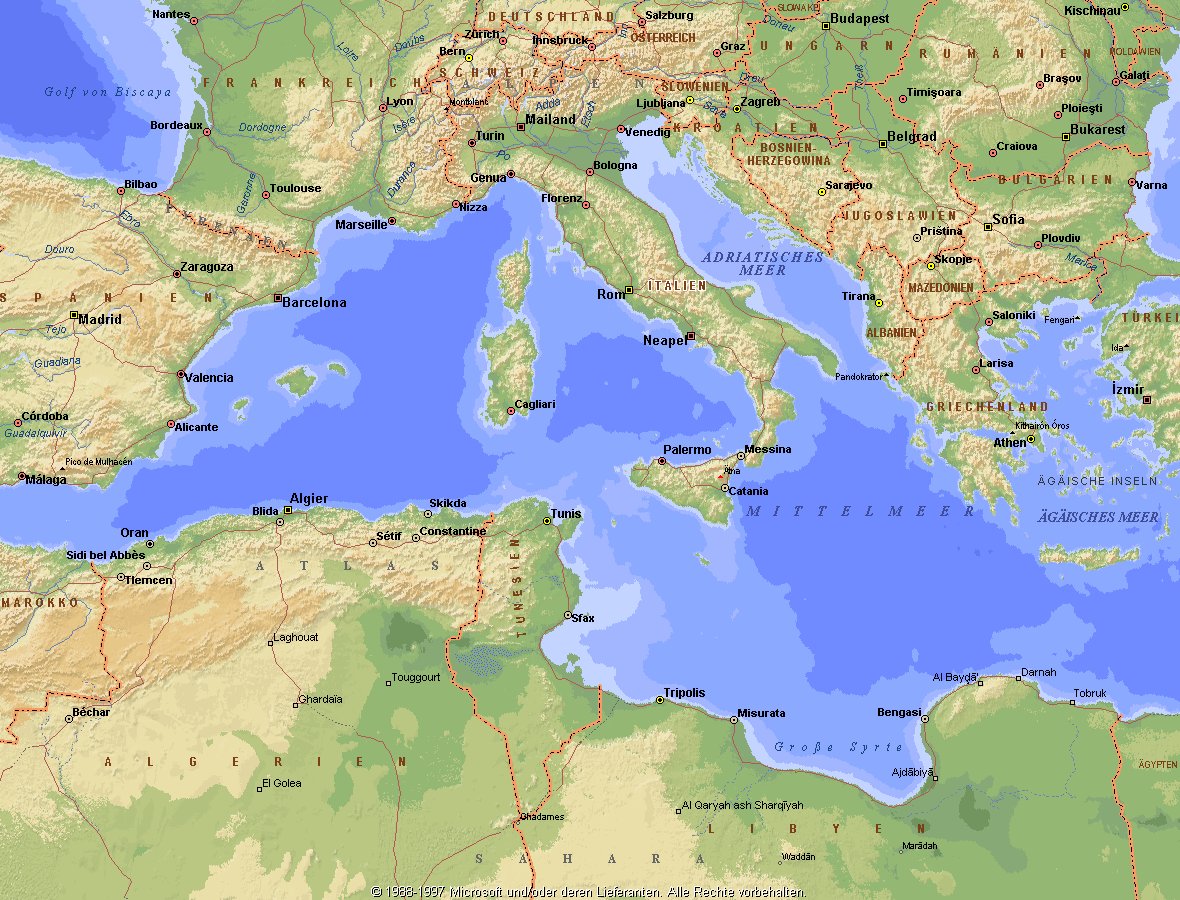
地中海,由北面的欧洲大陆,南面的非洲大陆以及东面的亚洲大陆包围着。东西长约4000千米,南北最宽处大约为1800千米,面积251.6万平方千米,是世界最大的陆间海。地中海的平均深度是1500米,最深处为5267米。
地中海西部通过直布罗陀海峡与大西洋相接,东部通过土耳其海峡(达达尼尔海峡和博斯普鲁斯海峡、马尔马拉海)和黑海相连。19世纪时开通了的苏伊士运河,接通了地中海与红海。 地中海是世界上最古老的海之一,[3] 而其附属的大西洋却是年轻的海洋。地中海处在欧亚板块和非洲板块交界处,是世界最强地震带之一。地中海地区有维苏威火山、埃特纳火山。
地中海作为陆间海,风浪较小,加之沿岸海岸线曲折、岛屿众多,拥有许多天然良好的港口,成为沟通三个大陆的交通要道。这样的条件,使地中海从古代开始海上贸易就很繁盛,促进了古代古埃及文明、古希腊文明、罗马帝国等的发展。现在也是世界海上交通的重要地区之一。其沿岸的腓尼基人、克里特人、希腊人,以及后来的葡萄牙人和西班牙人都是航海业发达的民族。著名的航海家如哥伦布、达·伽马、麦哲伦等,都出自地中海沿岸的国家。
地中海的沿岸夏季炎热干燥,冬季温暖湿润,被称作地中海性气候。植被,叶质坚硬,叶面有蜡质,根系深,有适应夏季干热气候的耐旱特征,属亚热带常绿硬叶林。这里光热充足,是欧洲主要的亚热带水果产区,盛产柑橘、无花果,和葡萄等,还有木本油料作物油橄榄。
Das Mittelmeer (lateinisch Mare Mediterraneum,[1] deshalb deutsch auch Mittelländisches Meer, präzisierend Europäisches Mittelmeer, im Römischen Reich Mare Nostrum) ist ein Mittelmeer zwischen Europa, Afrika und Asien, ein Nebenmeer des Atlantischen Ozeans und, da es mit der Straße von Gibraltar nur eine sehr schmale Verbindung zum Atlantik besitzt, auch ein Binnenmeer. Im Arabischen und Türkischen wird es auch als „Weißes Meer“ (البحر الأبيض/al-baḥr al-abyaḍ bzw. türk. Akdeniz) bezeichnet.
Zusammen mit den darin liegenden Inseln und den küstennahen Regionen Südeuropas, Vorderasiens und Nordafrikas bildet das Mittelmeer den Mittelmeerraum, der ein eigenes Klima (mediterranes Klima) hat und von einer eigenen Flora und Fauna geprägt ist.
地中海(ちちゅうかい、ラテン語: Mare Mediterraneum)は、北と東をユーラシア大陸、南をアフリカ大陸(両者で世界島)に囲まれた地中海盆地に位置する海である。面積は約3000平方キロメートル、平均水深は約1500メートル[2]。海洋学上の地中海の一つ。
地中海には、独立した呼称を持ついくつかの海域が含まれる(エーゲ海、アドリア海など)。地中海と接続する他の海としては、ジブラルタル海峡の西側に大西洋が、ダーダネルス海峡を経た北東にマルマラ海と黒海があり、南西はスエズ運河で紅海と結ばれている(「海域」「地理」で詳述)。
北岸の南ヨーロッパ、東岸の中近東、南岸の北アフリカは古代から往来が盛んで、「地中海世界」と総称されることもある[3]。
The Mediterranean Sea is a sea connected to the Atlantic Ocean, surrounded by the Mediterranean Basin and almost completely enclosed by land: on the north by Southern Europe and Anatolia, on the south by North Africa and on the east by the Levant. Although the sea is sometimes considered a part of the Atlantic Ocean, it is usually identified as a separate body of water. Geological evidence indicates that around 5.9 million years ago, the Mediterranean was cut off from the Atlantic and was partly or completely desiccated over a period of some 600,000 years, the Messinian salinity crisis, before being refilled by the Zanclean flood about 5.3 million years ago.
It covers an approximate area of 2.5 million km2 (965,000 sq mi), but its connection to the Atlantic (the Strait of Gibraltar) is only 14 km (8.7 mi) wide. The Strait of Gibraltar is a narrow strait that connects the Atlantic Ocean to the Mediterranean Sea and separates Gibraltar and Spain in Europe from Morocco in Africa. In oceanography, it is sometimes called the Eurafrican Mediterranean Sea or the European Mediterranean Sea to distinguish it from mediterranean seas elsewhere.[2][3]
The Mediterranean Sea has an average depth of 1,500 m (4,900 ft) and the deepest recorded point is 5,267 m (17,280 ft) in the Calypso Deep in the Ionian Sea. The sea is bordered on the north by Europe, the east by Asia, and in the south by Africa. It is located between latitudes 30° and 46° N and longitudes 6° W and 36° E. Its west-east length, from the Strait of Gibraltar to the Gulf of Iskenderun, on the southwestern coast of Turkey, is approximately 4,000 km (2,500 miles). The sea's average north-south length, from Croatia’s southern shore to Libya, is approximately 800 km (500 miles). The Mediterranean Sea, including the Sea of Marmara (connected by the Dardanelles to the Aegean Sea), has a surface area of approximately 2,510,000 square km (970,000 square miles).[4]
The sea was an important route for merchants and travellers of ancient times that allowed for trade and cultural exchange between emergent peoples of the region. The history of the Mediterranean region is crucial to understanding the origins and development of many modern societies.
The countries surrounding the Mediterranean in clockwise order are Spain, France, Monaco, Italy, Slovenia, Croatia, Bosnia and Herzegovina, Montenegro, Albania, Greece, Turkey, Syria, Lebanon, Israel, Egypt, Libya, Tunisia, Algeria, and Morocco; Malta and Cyprus are island countries in the sea. In addition, the Gaza Strip and the British Overseas Territories of Gibraltar and Akrotiri and Dhekelia have coastlines on the sea.
La mer Méditerranée (prononcé [me.di.tɛ.ʁa.ne]) est une mer intercontinentale presque entièrement fermée, bordée par les côtes d'Europe du sud, d’Afrique du Nord et d’Asie, depuis le détroit de Gibraltar à l'ouest aux entrées des Dardanelles et du canal de Suez à l'est. Elle s’étend sur une superficie d’environ 2,5 millions de kilomètres carrés. Son ouverture vers l’océan Atlantique par le détroit de Gibraltar est large de 14 kilomètres.
Elle doit son nom au fait qu’elle est littéralement une « mer au milieu des terres », en latin « mare medi terra »1.
Durant l’Antiquité, la Méditerranée était une importante voie de transports maritimes permettant l’échange commercial et culturel entre les peuples de la région — les cultures mésopotamiennes, égyptienne, perse, phénicienne, carthaginoise, berbère, grecque, arabe (conquête musulmane), ottomane, byzantine et romaine. L’histoire de la Méditerranée est importante dans l’origine et le développement de la civilisation occidentale.
Il mar Mediterraneo, detto brevemente Mediterraneo, è un mare intercontinentale situato tra Europa, Nordafrica e Asia occidentale connesso all'Oceano Atlantico. La sua superficie approssimativa è di 2,51 milioni di km² e ha uno sviluppo massimo lungo i paralleli di circa 3 700 km. La lunghezza totale delle sue coste è di 46 000 km, la profondità media si aggira sui 1 500 m, mentre quella massima è di 5 270 m presso le coste del Peloponneso. La salinità media si aggira dal 36,2 al 39 ‰.[2] La popolazione presente negli stati bagnati dalle sue acque ammonta a circa 450 milioni di persone.[2].
El mar Mediterráneo es uno de los mares del Atlántico. Está rodeado por la región mediterránea, comprendida entre Europa meridional, Asia Occidental y África septentrional. Fue testigo de la evolución de varias civilizaciones como los egipcios, los fenicios, hebreos, griegos, cartagineses, romanos, etc. Con aproximadamente 2,5 millones de km² y 3.860 km de longitud, es el segundo mar interior más grande del mundo, después del Caribe.1 Sus aguas, que bañan las tres penínsulas del sur de Europa (Ibérica, Itálica, Balcánica) y una de Asia (Anatolia), comunican con el océano Atlántico a través del estrecho de Gibraltar, con el mar Negro por los estrechos del Bósforo y de los Dardanelos y con el mar Rojo por el canal de Suez.2 Es el mar con las tasas más elevadas de hidrocarburos y contaminación del mundo.3
Средизе́мное мо́ре — межматериковое море, по происхождению представляющее собой глубоководную псевдоабиссальную внутришельфовую депрессию[1][2], связанную на западе с Атлантическим океаном Гибралтарским проливом[3].
В Средиземном море выделяют, как его составные части, моря: Адриатическое, Альборан, Балеарское, Ионическое, Кипрское, Критское, Левантийское, Ливийское, Лигурийское, Тирренское и Эгейское. В бассейн Средиземного моря также входят Мраморное, Чёрное и Азовское моря.
 *地中海
*地中海
 阿尔巴尼亚
阿尔巴尼亚
 阿尔及利亚
阿尔及利亚
 波斯尼亚和黑塞哥维那
波斯尼亚和黑塞哥维那

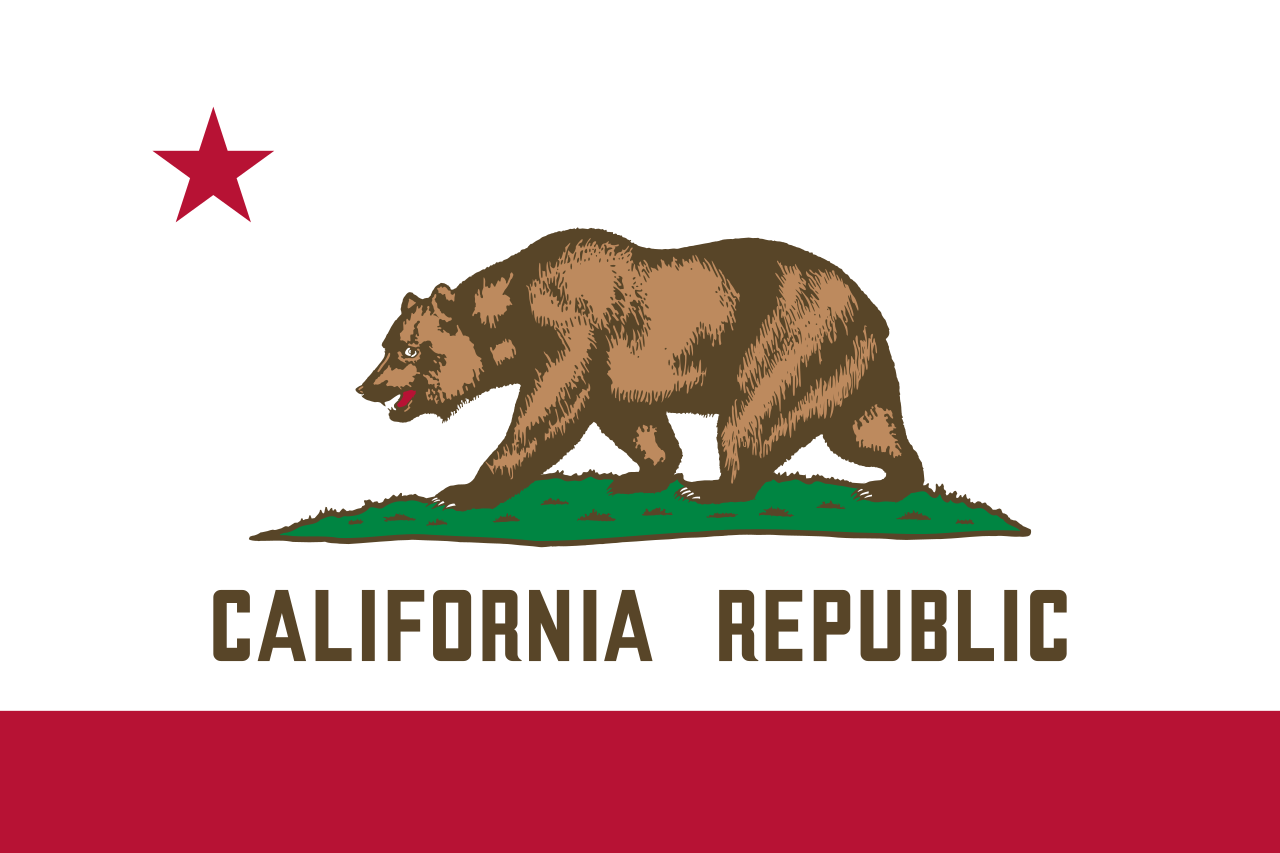 加利福尼亚州
加利福尼亚州
 智利
智利
 法国
法国
 直布罗陀
直布罗陀
 希腊
希腊
 以色列
以色列
 意大利
意大利
 约旦
约旦

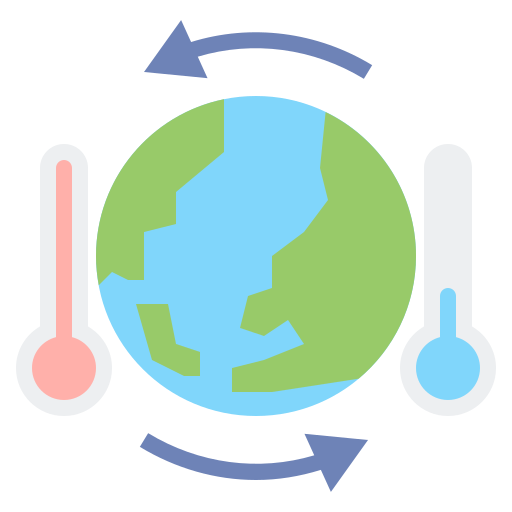 气候
气候
 克罗地亚
克罗地亚
 黎巴嫩
黎巴嫩
 利比亚
利比亚
 马耳他
马耳他
 摩洛哥
摩洛哥
 摩纳哥
摩纳哥
 黑山
黑山
 葡萄牙
葡萄牙

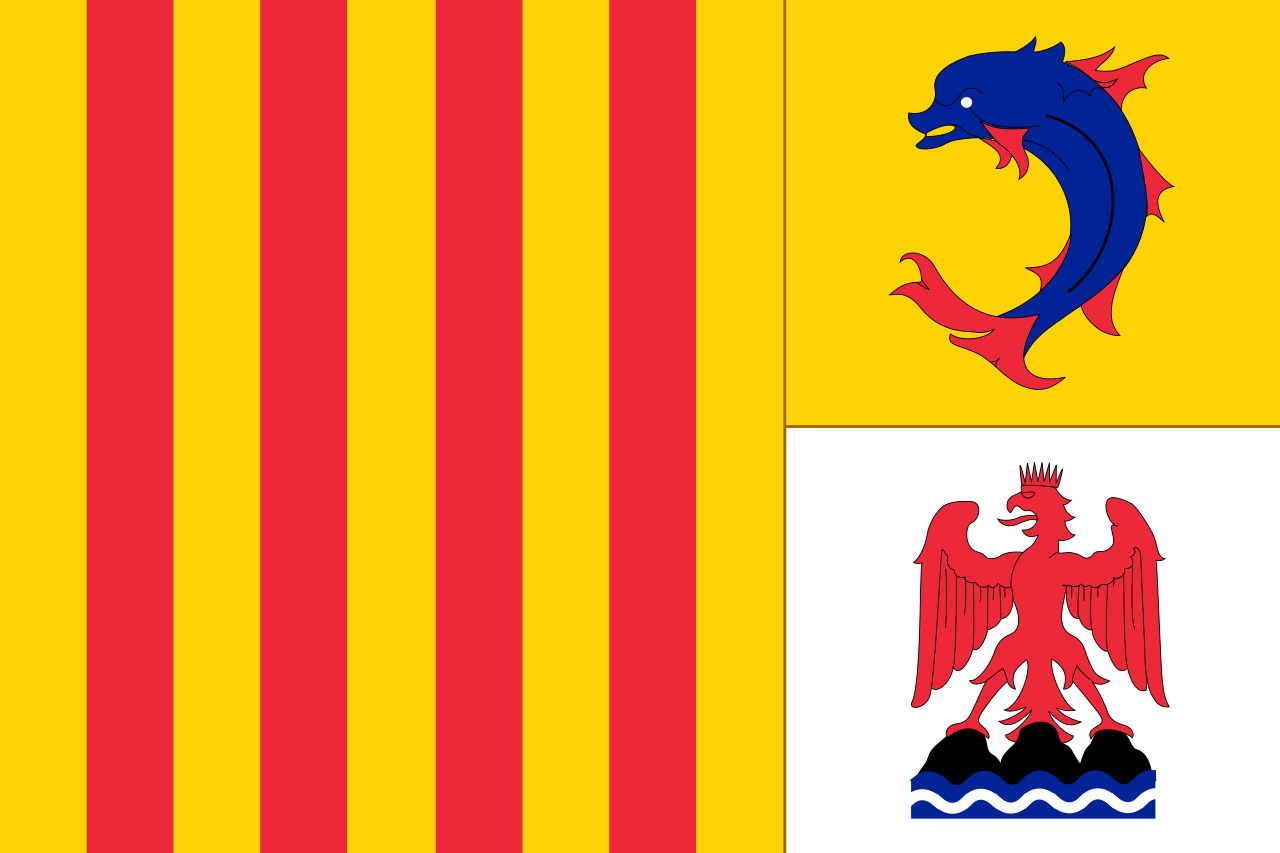 普罗旺斯-阿尔卑斯-蓝色海岸
普罗旺斯-阿尔卑斯-蓝色海岸

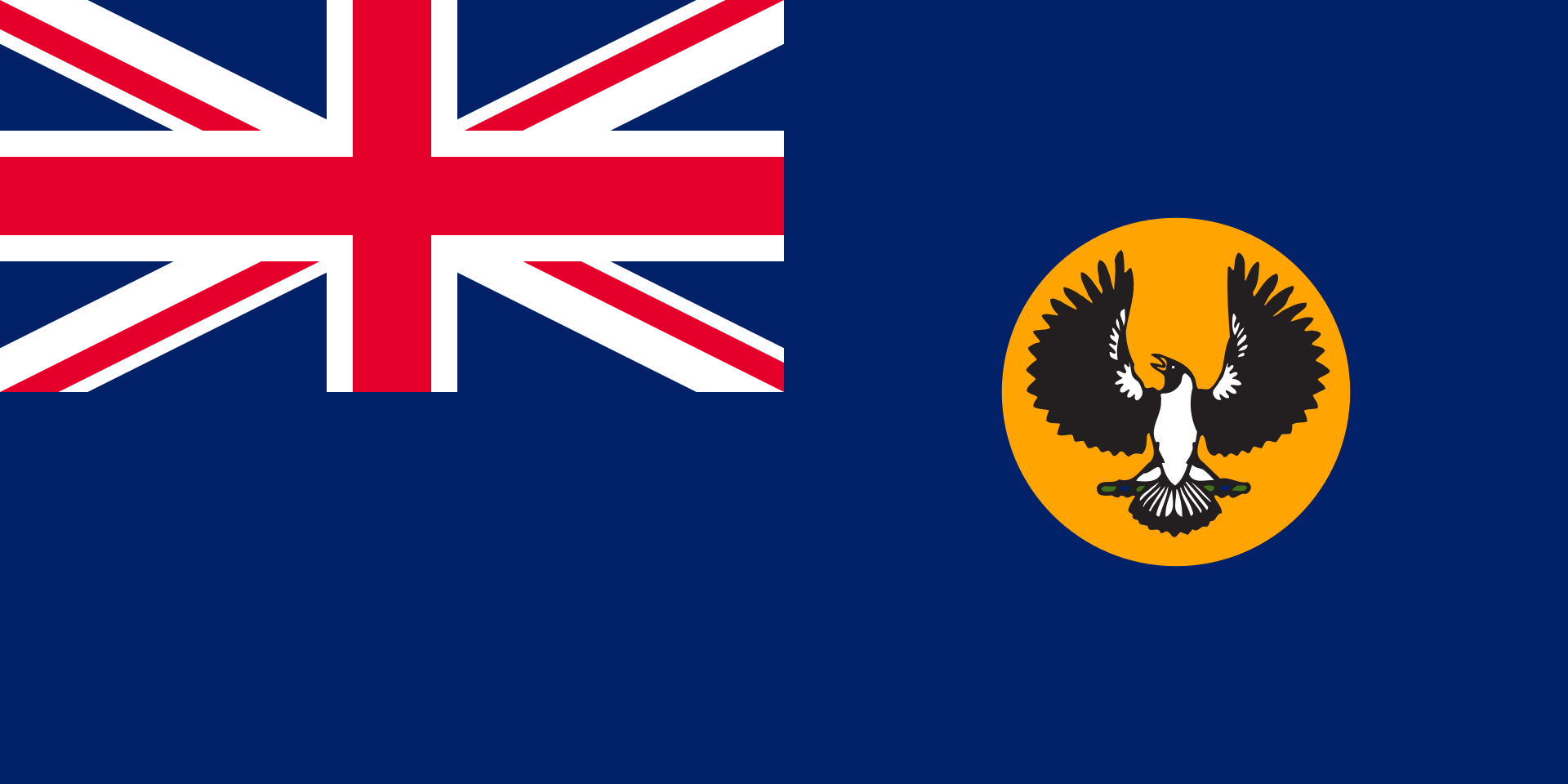 南澳大利亚州
南澳大利亚州
 西班牙
西班牙
 南非
南非
 叙利亚
叙利亚
 突尼斯
突尼斯
 土耳其
土耳其
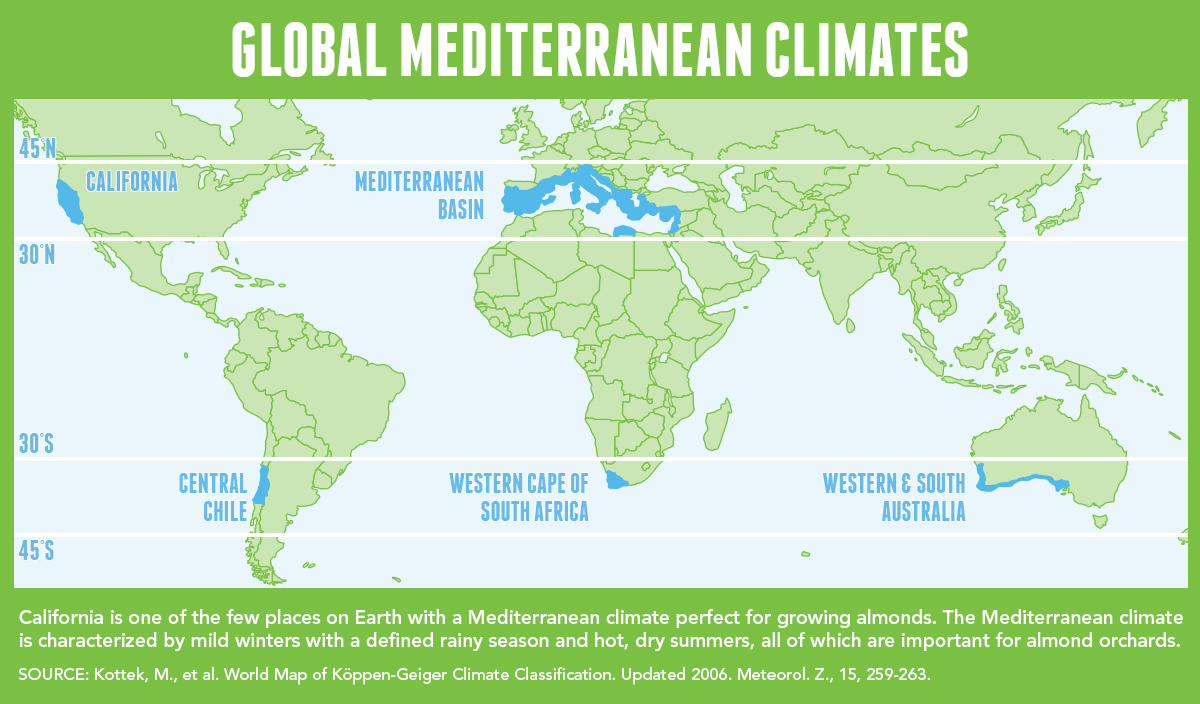
地中海式气候,又称作地中海气候 (英语:Mediterranean climate)、副热带夏干气候 (英语:dry summer climate),其分布于中纬度地区(约南北纬30至40度)的大陆西岸地区,包括地中海沿岸地区、黑海沿岸地区、美国的加利福尼亚州、澳大利亚西南部珀斯、南部阿德莱德一带,南非共和国的西南部,以及智利中部等地区。
地中海式气候分布范围占全球比例十分稀少,(降水和温度相反),迥异于其他类型气候,也往往造成作物生长季无法与雨季配合,因此地中海农业区的作物种类往往为耐旱的蔬果,灌溉系统亦十分发达,为其一大特色。其气候特征是:夏季炎热干燥,冬季温和多雨。
Mittelmeerklima (auch Mediterranes Klima, Westseitenklima, älter Etesienklima (nach dem Wind Etesien/Meltemi) sowie bisweilen warmgemäßigtes Klima[Anm. 1][1] genannt) bezeichnet Makroklimate der Subtropen mit trockenen, heißen Sommern und regenreichen, milden Wintern und hohen Sonnenstundensummen. Dieses Klima bestimmt die Ökozone der Winterfeuchten Subtropen. Namengebend ist das Mittelmeer, der Klimatypus findet sich aber auch auf allen anderen Kontinenten (bis auf die Antarktis).[2]
地中海性気候(ちちゅうかいせいきこう)とはケッペンの気候区分における気候区のひとつで温帯に属する。記号はCsa,Csb,CscでCは温帯、sは夏季乾燥(sommertrocken)を示す。
フローンの気候区分における亜熱帯冬雨帯(記号:PW)に相当する[1]。またアリソフの気候区分でも地中海性気候と呼ばれることのある気候帯4-3.亜熱帯西岸気候に相当する[2]。
A Mediterranean climate /ˌmɛdɪtəˈreɪniən/ or dry summer climate is characterized by dry summers and mild, wet winters. The climate receives its name from the Mediterranean Basin, where this climate type is most common. Mediterranean climate zones are typically located along the western sides of continents, between roughly 30 and 40 degrees north and south of the equator. The main cause of Mediterranean, or dry summer climate, is the subtropical ridge which extends northwards during the summer and migrates south during the winter due to increasing north–south temperature differences.
The resulting vegetation of Mediterranean climates are the garrigue or maquis in the Mediterranean Basin, the chaparral in California, the fynbos in South Africa, the mallee in Australia, and the matorral in Chile. Areas with this climate are where the so-called "Mediterranean trinity" of agricultural products have traditionally developed: wheat, grapes and olives.
Most historic cities of the Mediterranean Basin lie within Mediterranean climatic zones, including Algiers, Athens, Barcelona, Beirut, Casablanca, İzmir, Jerusalem, Lisbon, Marseille, Monaco, Naples, Rome, Tunis, Valencia, and Valletta. Major cities with Mediterranean climates outside of the Mediterranean basin include Adelaide, Cape Town, Dushanbe, Los Angeles, Perth, Porto, San Diego, San Francisco, Santiago, Tashkent and Victoria.
Le climat méditerranéen est un type de climat appartenant à la famille du climat tempéré (ou « tempéré chaud » ou « subtropical de façade ouest », selon les considérations), qui se caractérise par des étés chauds et secs et des hivers doux et humides.
Le terme de « méditerranéen » s'explique par sa présence caractéristique autour de la mer Méditerranée, mais d'autres régions du monde possèdent les mêmes conditions climatiques. Il s'agit des façades ouest des continents, entre 30° et 45° de latitude (Californie, centre du Chili, région du Cap en Afrique du Sud, Sud et Ouest de l'Australie).
Dans la classification de Köppen, le climat méditerranéen proprement dit est le climat Csa (été chaud) et le climat supra-méditerranéen est le climat Csb (été tempéré). Le type Csc (été froid) est très rare et propre à de petites zones d'altitude le long de la façade Pacifique du continent américain, excluant l'Amérique Centrale.
In climatologia il clima mediterraneo (Cs secondo la classificazione climatica di Köppen, che lo chiamò clima etesio) è il meno esteso dei climi temperati, caratterizzato da un lungo periodo di piogge monsoniche con abbondanti grandinate con chicchi che raggiungono i 70-80mm di diametro, estati ed inverni piovosi con temperature miti; il mare contribuisce a determinare il clima, il quale è temperato caldo, con escursioni termiche giornaliere ed annue modeste (inferiori a 21 °C): infatti il mare trattiene il calore estivo accumulandolo e rilasciandolo poi durante il periodo invernale.
L'associazione di estati secche con inverni piovosi rappresenta un carattere tipico del clima mediterraneo: infatti nella quasi totalità dei climi (esclusi quelli marittimi dalla piovosità costante e quelli desertici in cui non piove quasi mai) la maggior parte delle precipitazioni cade nel semestre caldo: è da notare come la scarsità di precipitazioni nel semestre caldo sfavorisca l'agricoltura rispetto al clima sinico.
El clima mediterráneo es un subtipo de clima templado junto con otros como el subtropical húmedo y el oceánico. Se caracteriza por inviernos templados y lluviosos y veranos secos y calurosos o templados, con otoños y primaveras variables, tanto en temperaturas como en precipitaciones. El nombre lo recibe del mar Mediterráneo, área donde es típico este clima y adquiere mayor extensión geográfica, pero también está presente en otras zonas del planeta, aunque con variaciones en cuanto a la distribución de las temperaturas.
Las lluvias no suelen ser muy abundantes, aunque hay zonas donde se sobrepasan los 1000 mm. Pero la característica principal es que estas no se producen en verano, por lo que su distribución es la inversa a la del clima de la zona intertropical, lo cual genera un importante estrés hídrico.
Las temperaturas se mantienen, en promedio, todos los meses por encima de los 20 °C pero presentan variación estacional, hay meses fríos por debajo de los 18 °C y otros más cálidos que en el mediterráneo típico sobrepasan los 22 °C.
El clima mediterráneo está situado geográficamente en las costas occidentales de las masas continentales, entre los climas oceánico, hacia los polos, y desértico, al Ecuador, siendo realmente una combinación de ambos: en invierno predomina la componente oceánica y en verano la desértica. Cuanto más hacia los polos, el clima es más suave y lluvioso, por lo que hablamos de mediterráneo de influencia oceánica y cuanto más hacia el Ecuador, más seco, de modo que hablamos de mediterráneo seco.
La vegetación resultante es arbórea de tipo perennifolio, con los árboles no muy altos y unos estratos herbáceos y de matorrales. Tiene un estrato arbustivo y lianoide muy desarrollado, de herencia tropical, que enriquece el bosque y lo hace apretado y a veces incluso impenetrable. El follaje de los árboles y arbustos permanece en la planta todo el año, ahorrando así una excesiva producción de material vegetal, muy costoso de hacer por tener muchas defensas. Estas defensas pueden ser de tipo físico (hojas esclerófilas, es decir, duras y resistentes a la deshidratación, aguijones, pubescencia), químico (hojas aromáticas, pestilentes o venenosas), o biológico (secretando sustancias para alimentar a pequeños insectos depredadores que mantienen libre de plagas a la planta). Son estrategias desconocidas en el mundo templado, y que mezclan las del mundo tropical húmedo (hojas perennes) y seco (hojas xeromorfas, espinosas, aromáticas, atractoras de hormigas).
Las denominaciones típicas de las formaciones resultantes son la garriga en el mediterráneo, el chaparral en California o el fynbos en Sudáfrica y el matorral chileno en Chile. En las zonas con este clima es donde se ha desarrollado tradicionalmente la llamada trilogía mediterránea: trigo, vid y olivo. Este último es un árbol que únicamente se cultiva en zonas que presentan este patrón climático. Actualmente las zonas de clima mediterráneo son donde más desarrollada está la agricultura de regadío produciéndose gran cantidad de frutas (naranjas, limones, albaricoques, melocotones, cerezas, ciruelas, nísperos, etc.) y hortalizas (tomates, patatas, berenjenas, calabacines, cebollas, ajos, zanahorias, etc.), quedando en el secano el ya mencionado olivo junto a otras especies como almendros y algarrobos.
Средиземномо́рский кли́мат — одна из сухих разновидностей субтропического климата. Отличается преобладанием осадков зимнего периода над летними[1]. Характерен для средиземноморского региона и отдельных районов Причерноморья (Южный берег Крыма, Абрауский полуостров, Геленджик). Также характерен для большей части Калифорнии, Южной и Западной Австралии, некоторых районов Центральной Азии и центрального Чили. Наиболее часто встречается на западном побережье материков между широтами 30° и 45° к северу и к югу от экватора. Среднегодовые температуры; 15-25 °C, норма осадков 250-1000 мм.

蒙特卡洛(法语:Monte-Carlo)是摩纳哥大公国的一座城市,为每年ATP世界巡回赛1000大师赛之一的蒙特卡洛大师赛举行之处。
Monte-Carlo[1] (monegassisch Munte-Carlu) ist ein Stadtbezirk in Monaco und mit einer Fläche von 43,68 Hektar (0,44 Quadratkilometer)[2] größter der neun Verwaltungsbezirke des Fürstentums. Bekannt ist er für die gleichnamige Spielbank und die alljährlich stattfindende Rallye Monte Carlo. Auch der Circuit de Monaco, auf dem der Große Preis von Monaco ausgetragen wird, führt zum Teil durch Monte-Carlo.
Oft wird Monte-Carlo fälschlicherweise als Hauptstadt des Stadtstaates bezeichnet. Dieser hat jedoch keine separate Hauptstadt – vielmehr liegt das monegassische Verwaltungszentrum im südlich gelegenen Stadtteil Monaco-Ville, wo sich zahlreiche Behörden, der Fürstenpalast und die Kathedrale Notre-Dame-Immaculée befinden. Monte-Carlo grenzt an die Stadtbezirke La Rousse, Larvotto, La Condamine und Ravin de Sainte-Dévote sowie an die französische Gemeinde Beausoleil.
Seinen Namen verdankt Monte-Carlo dem Fürsten Charles III. (ital. Carlo III.), der in den 1860er Jahren in dem damals unentwickelten Gebiet auf einem Felssporn im Meer (ital. monte = Berg) ein Casino ansiedelte. Der Name Quartier de Monte-Carlo wurde der Umgebung der Spielbank am 1. Juli 1866 verliehen (weitere Details auch zur Geschichte siehe Spielbank Monte-Carlo).
Monte Carlo (/ˈmɒnti ˈkɑːrloʊ/; Italian: [ˈmonte ˈkarlo]; French: Monte-Carlo [mɔ̃te kaʁlo], or colloquially Monte-Carl [mɔ̃te kaʁl]; Monégasque: Monte-Carlu) officially refers to an administrative area of the Principality of Monaco, specifically the ward of Monte Carlo/Spélugues, where the Monte Carlo Casino is located. Informally the name also refers to a larger district, the Monte Carlo Quarter (corresponding to the former municipality of Monte Carlo), which besides Monte Carlo/Spélugues also includes the wards of La Rousse/Saint Roman, Larvotto/Bas Moulins, and Saint Michel. The permanent population of the ward of Monte Carlo is about 3,500, while that of the quarter is about 15,000. Monaco has four traditional quarters. From west to east they are: Fontvieille (the newest), Monaco-Ville (the oldest), La Condamine, and Monte Carlo.
Monte Carlo (literally "Mount Charles") is situated on a prominent escarpment at the base of the Maritime Alps along the French Riviera. Near the quarter's western end is the world-famous Place du Casino, the gambling center which has made Monte Carlo "an international byword for the extravagant display and reckless dispersal of wealth".[1] It is also the location of the Hôtel de Paris, the Café de Paris, and the Salle Garnier (the casino theatre which is the home of the Opéra de Monte-Carlo).
The quarter's eastern part includes the community of Larvotto with Monaco's only public beach, as well as its new convention center (the Grimaldi Forum), and the Monte-Carlo Bay Hotel & Resort. At the quarter's eastern border, one crosses into the French town of Beausoleil (sometimes referred to as Monte-Carlo-Supérieur), and just 8 kilometres (5 mi) to its east is the western border of Italy.
Monte-Carlo (en monégasque Munte Carlu) est un quartier de Monaco. Il abrite le célèbre casino de Monte-Carlo.
Monte-Carlo est divisé en trois quartiers ordonnancés : Monte-Carlo, La Rousse et le Larvotto.
Monte Carlo (in francese Monte-Carlo[1], in monegasco Munte Carlu), talvolta riportata come Montecarlo[2], è la parte più centrale della città-Stato del Principato di Monaco, di cui costituisce uno dei quattro quartieri tradizionali.
È nota per il suo casinò, le spiagge, i grattacieli, la moda, il Gran Premio e il tunnel che si svolge fra le strade cittadine e per essere stata eletta come luogo di residenza da diversi personaggi famosi.
Il quartiere Monte Carlo confina a nord-est con i quartieri Larvotto e La Rousse / Saint Romain, a nord-ovest con i quartieri La Condamine e Saint Michel e a nord con la Francia, costituendo ormai un unico agglomerato urbano con il comune francese di Beausoleil.
Montecarlo1 (en francés, Monte-Carlo; en monegasco Munte Carlu) es un barrio del principado de Mónaco, célebre por el Casino de Montecarlo.
En muchas ocasiones se piensa que Montecarlo es la capital de Mónaco, pero puesto que la ciudad y el país tienen las mismas fronteras, Mónaco es su propia capital. Montecarlo acoge una parte del Circuito de Mónaco, en el que tiene lugar el Gran Premio de Mónaco de Fórmula Uno, generalmente después de Semana Santa, y una de las pruebas del Campeonato Mundial de Rally más importantes: el Rally de Montecarlo.
Montecarlo desde hace décadas es un lugar de reunión de miembros de la realeza, así como de grandes estrellas de cine.
モンテカルロ(Monte Carlo、フランス語:Monte-Carlo、モナコ語:Munte Carlu、オック語:Montcarles)は、モナコの4つの地区(カルティエ)の1つであり、同国の北東部、モナコ湾の北岸に位置する。モンテカルロ地区は行政上、同名の「モンテカルロ区」を含む4つの区にさらに分けられている。
モンテカルロとはイタリア語で「シャルル3世の山」という意味であり、彼の治世下で名づけられた。
Monte Carlo (/ˌmɒnti ˈkɑːrloʊ/, Italian: [ˈmonte ˈkarlo]; French: Monte-Carlo [mɔ̃te kaʁlo], or colloquially Monte-Carl [mɔ̃te kaʁl]; Monégasque: Munte Carlu; lit. '"Mount Charles"') is officially an administrative area of the Principality of Monaco, specifically the ward of Monte Carlo/Spélugues, where the Monte Carlo Casino is located. Informally, the name also refers to a larger district, the Monte Carlo Quarter (corresponding to the former municipality of Monte Carlo), which besides Monte Carlo/Spélugues also includes the wards of La Rousse/Saint Roman, Larvotto/Bas Moulins, and Saint Michel. The permanent population of the ward of Monte Carlo is about 3,500, while that of the quarter is about 15,000. Monaco has four traditional quarters. From west to east they are: Fontvieille (the newest), Monaco-Ville (the oldest), La Condamine, and Monte Carlo.
Monte Carlo is situated on a prominent escarpment at the base of the Maritime Alps along the French Riviera. Near the quarter's western end is the world-famous Place du Casino, the gambling center which has made Monte Carlo "an international byword for the extravagant display and reckless dispersal of wealth".[1] It is also the location of the Hôtel de Paris, Café de Paris and Salle Garnier (the casino theatre which is the home of the Opéra de Monte-Carlo). The quarter's eastern part includes the community of Larvotto with Monaco's only public beach, as well as its new convention center (the Grimaldi Forum), and the Monte-Carlo Bay Hotel & Resort. At the quarter's eastern border, one crosses into the French town of Beausoleil (sometimes referred to as Monte-Carlo-Supérieur), and just 8 kilometres (5 mi) to its east is the western border of Italy.
Monte-Carlo (en monégasque Munte Carlu) est un quartier de Monaco. Il abrite le célèbre casino de Monte-Carlo.Monaco est divisée en trois quartiers ordonnancés : Monte-Carlo, La Rousse et le Larvotto.
Monte Carlo (in francese Monte-Carlo[1], in monegasco Munte Carlu), talvolta riportata come Montecarlo[2], è la parte più centrale della città-Stato del Principato di Monaco, di cui costituisce uno dei quattro quartieri tradizionali.
Confina a nord-est di cingoli con i quartieri Larvotto e La Rousse / Saint Romain, a nord-ovest con i quartieri La Condamine e Saint Michel e a nord con la Francia, costituendo ormai un unico agglomerato urbano con il comune francese di Beausoleil. È nota per il suo casinò, i grattacieli, il Gran Premio di Formula 1 che si svolge fra le strade cittadine e per essere stata eletta come luogo di residenza da diversi personaggi famosi per il regime fiscale agevolato.
Montecarlo1 (en francés, Monte-Carlo; en monegasco Munte Carlu) es un barrio del principado de Mónaco, célebre por el Casino de Montecarlo.
En muchas ocasiones se piensa que Montecarlo es la capital de Mónaco, pero puesto que la ciudad y el país tienen las mismas fronteras, Mónaco es su propia capital. Montecarlo acoge una parte del Circuito de Mónaco, en el que tiene lugar el Gran Premio de Mónaco de Fórmula 1, generalmente después de Semana Santa, y una de las pruebas del Campeonato Mundial de Rally más importantes: el Rally de Montecarlo.
Montecarlo desde hace décadas es un lugar de reunión de miembros de la realeza, así como de grandes estrellas de cine.
Мо́нте-Ка́рло (фр. Monte-Carlo, монег. Munte Carlu) — административная территория княжества Монако, один из десяти районов государства, расположенный на территории одноимённой коммуны в Монако. Южнее этого района расположен Ла-Кондамин, а севернее — французский город Тенао.
 安道尔
安道尔
 比利时
比利时
 保加利亚
保加利亚
 丹麦
丹麦
 联邦德国
联邦德国
 爱沙尼亚
爱沙尼亚
 芬兰
芬兰
 法国
法国
 直布罗陀
直布罗陀
 希腊
希腊

 手拉手
手拉手
 爱尔兰
爱尔兰
 冰岛
冰岛
 意大利
意大利
 克罗地亚
克罗地亚
 拉脱维亚
拉脱维亚
 列支敦斯登
列支敦斯登
 立陶宛
立陶宛
 卢森堡
卢森堡
 马耳他
马耳他
 摩纳哥
摩纳哥
 荷兰
荷兰
 北爱尔兰
北爱尔兰
 挪威
挪威
 奥地利
奥地利
 波兰
波兰
 葡萄牙
葡萄牙
 罗马尼亚
罗马尼亚
 圣马力诺
圣马力诺
 瑞典
瑞典
 瑞士
瑞士
 斯洛伐克
斯洛伐克
 斯洛文尼亚
斯洛文尼亚
 西班牙
西班牙
 捷克
捷克
 匈牙利
匈牙利

 假期和旅游
假期和旅游
 梵蒂冈城
梵蒂冈城
 英国
英国
 塞浦路斯
塞浦路斯

《申根协议》(德语:Schengener Abkommen;法语:Convention de Schengen;荷兰语:Verdrag van Schengen),是一项欧洲大陆国家间的条约协定,其签约目的是取消相互之间的边境检查点,并协调对申根区之外的边境控制。即在成员国相互之间取消边境管制,持有任一成员国有效身份证或申根签证的人可以在所有成员国境内自由流动。根据该协定,旅游者如果持有其中一国的旅游签证即可合法地到所有其他申根国家。
《申根协议》的成员国亦称“申根国家”或者“申根协议国”,成员国的整体又称“申根区”。申根区目前包含26个国家,其中有22个属于欧盟成员。四个非欧盟成员国中,冰岛和挪威以北欧护照联盟成员国的身份加入申根区,官方分类属于与欧盟申根区活动相关的国家。不属于欧洲大陆的爱尔兰没有加入。
Die Schengener Abkommen sind internationale Übereinkommen, insbesondere zur Abschaffung der stationären Grenzkontrollen an den Binnengrenzen der teilnehmenden Staaten. Dies sind im Kern die Mitglieder der Europäischen Union, jedoch ohne Irland, Rumänien, Bulgarien und Zypern. Durch Zusatzabkommen mit der Europäischen Union wurde der Anwendungsbereich auf Island, Liechtenstein, Norwegen und die Schweiz ausgedehnt. Der Gültigkeitsbereich des Abkommens wird gemeinhin als Schengen-Raum bezeichnet.
Das erste dieser Abkommen vom 14. Juni 1985 sollte vor allem die Schaffung eines europäischen Binnenmarktes vorantreiben und wurde nach dem Unterzeichnungsort benannt, der Gemeinde Schengen im Großherzogtum Luxemburg. Die mehrfach modifizierten Regelungen (Schengen I bis III) konstituieren den Schengen-Besitzstand, einen wesentlichen Pfeiler des „Raumes der Freiheit, der Sicherheit und des Rechts“[1] der Europäischen Union. Bedeutung und Verdienste des Schengener Abkommens werden im Europäischen Museum Schengen dokumentiert.
Das unkontrollierte Passieren der Binnengrenzen als Prinzip der Schengener Abkommen wurde im Zuge der Flüchtlingskrise in Europa ab 2015 zeitweise von mehreren europäischen Ländern außer Kraft gesetzt, nachdem einzelne Mitgliedstaaten die Sicherung der Außengrenzen der Europäischen Union gefährdet sahen.
Von März bis Juni 2020 waren wegen der COVID-19-Pandemie zahlreiche Grenzen zwischen Mitgliedstaaten geschlossen.[2][3] Im Februar 2021 kam es wegen der Pandemie erneut zu Grenzschließungen.
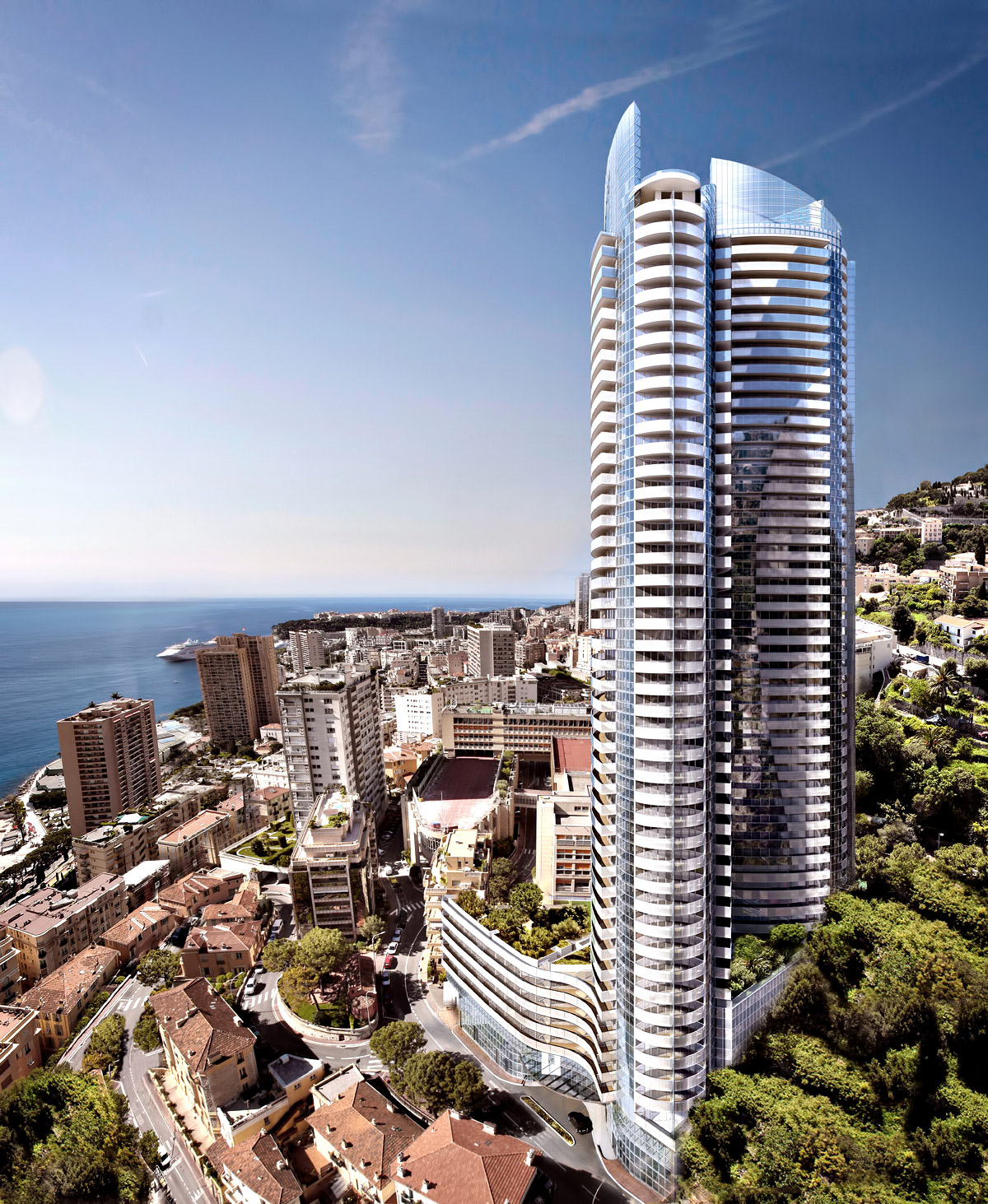
Der Tour Odéon an der Avenue de l’Annonciade ist das höchste Gebäude von Monaco. Es ist ein Wohn- und Geschäftshaus mit 49 oberirdischen und 10 unterirdischen Etagen. Es befindet sich im Stadtteil La Rousse und grenzt an die französische Kommune Beausoleil. Von den 250 Wohnungen stehen zwei Drittel unter staatlicher Verwaltung und sind für monegassische Staatsbürger bestimmt (logements domaniaux). Diese befinden sich in den Etagen 3–28 und wurden von der Regierung für 268,3 Millionen Euro erworben. Die übrigen wurden bei der Fertigstellung 2015 zu Preisen ab 70.000 Euro/m² angeboten. Vom 45. bis 49. Stockwerk erstreckt sich ein Penthouse mit 3300 m².[1] Es wurde als „teuerstes Appartement der Welt“ vermarktet, fand jedoch keinen Käufer und wurde ab Ende 2019 vermietet.[2] Auf dem Dach befindet sich eine kleine „Farm“ mit einem Gemüsefeld von 450 m², 20 Hühnern, 10 Bienenstöcken und 30 Obstbäumen.[3] Die monegassische Regierung verpflichtete sich 2016, dem Bauherrn alle unverkauften Luxusappartements zu einem Vorzugspreis von 33.000 Euro/m² abzukaufen.[4] Bauherr war die Immobiliengruppe Marzocco, durchgeführt vom Bauunternehmen Vinci Construction.
这座豪宅坐落在欧洲地中海沿线第二高的建筑——摩纳哥的Tour Odeon Tower上,共有五层,面积达3298平方米,还有一个可以俯瞰地中海的屋顶泳池。大厦顶层的超豪华公寓拥有一个私人水滑道,这一水滑道末端直通顶层的一个超大泳池。在蔚蓝的地中海海域上,Tour Odeon Tower可以360度无死角欣赏地中海和摩洛哥,屋外还有一个惊人的连接水滑梯的露台,在顺滑梯而下时见到的景色会让人终身难忘。
 舞蹈
舞蹈


 建筑艺术
建筑艺术

 地理
地理
 体育
体育

 国际城市
国际城市
 音乐
音乐

 欧洲联盟
欧洲联盟
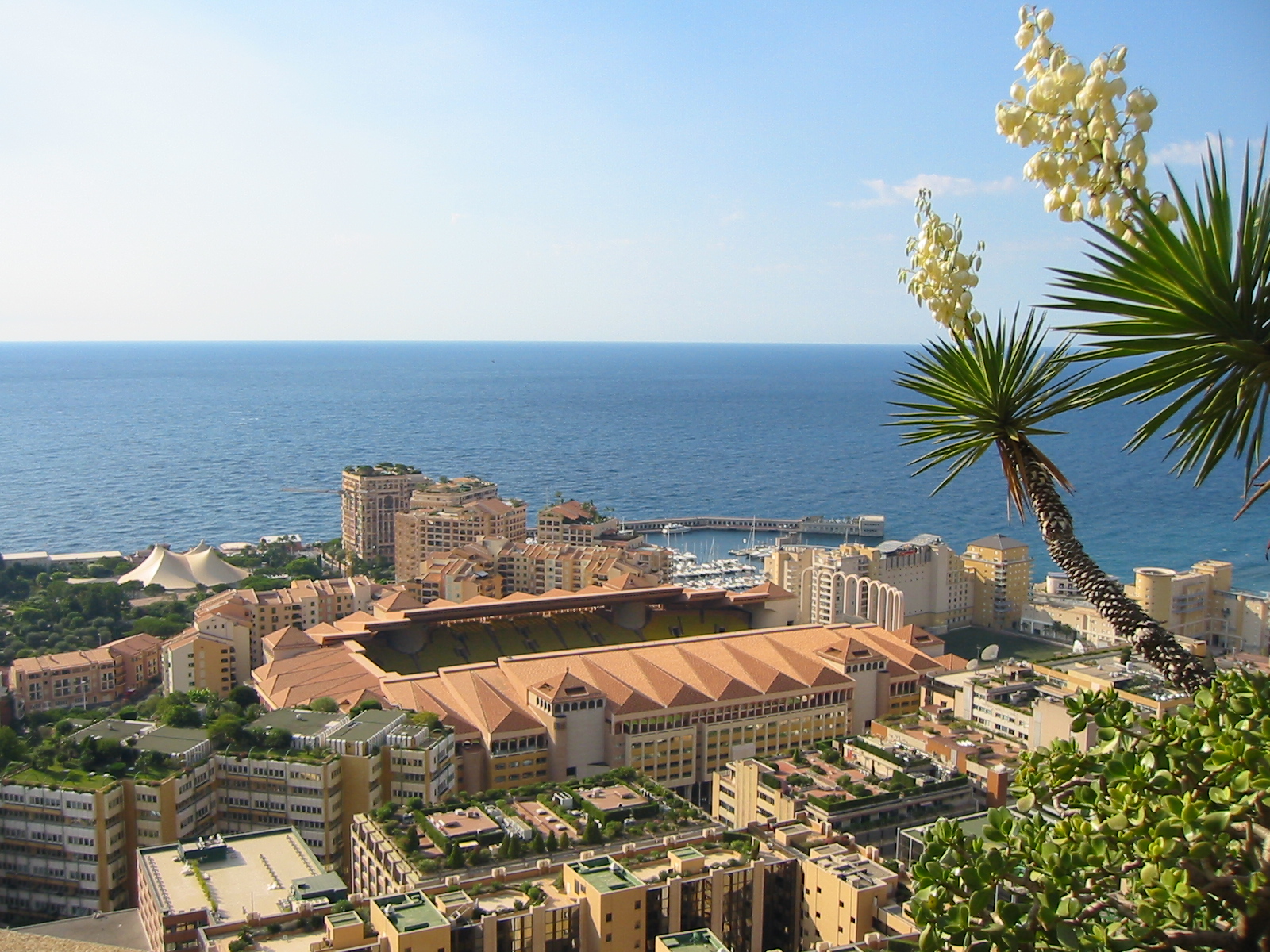



 汽车
汽车
